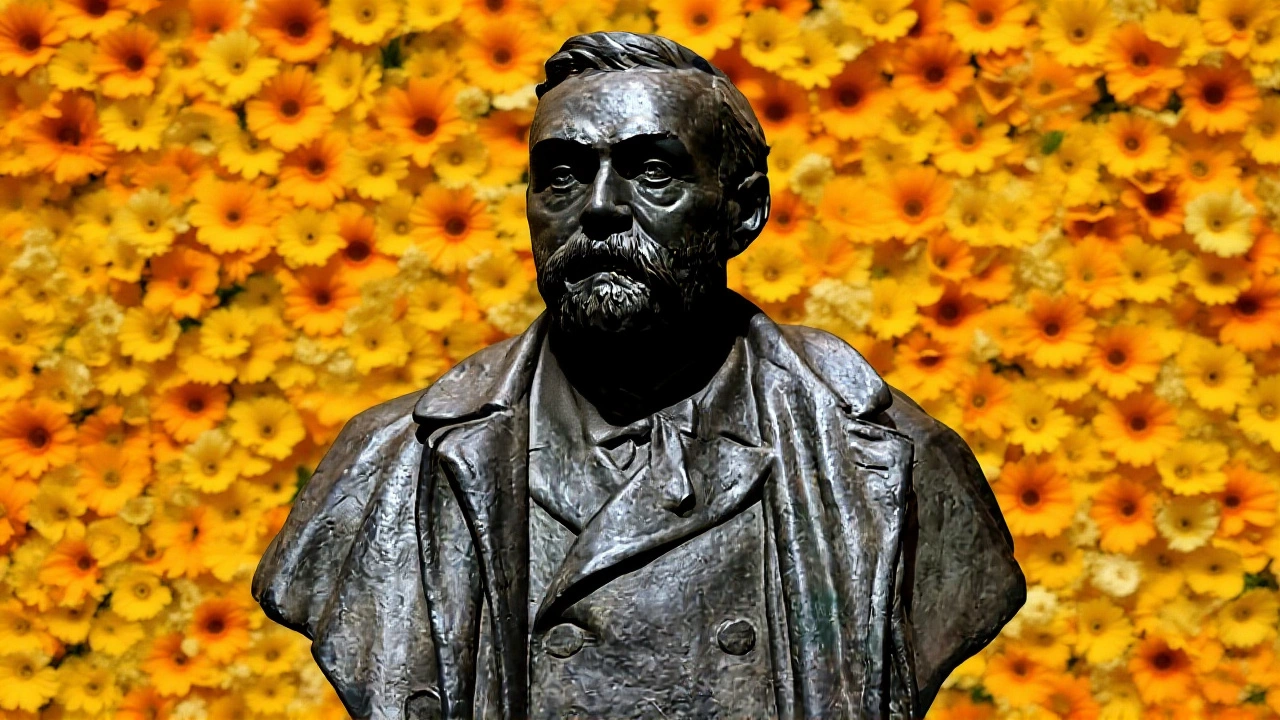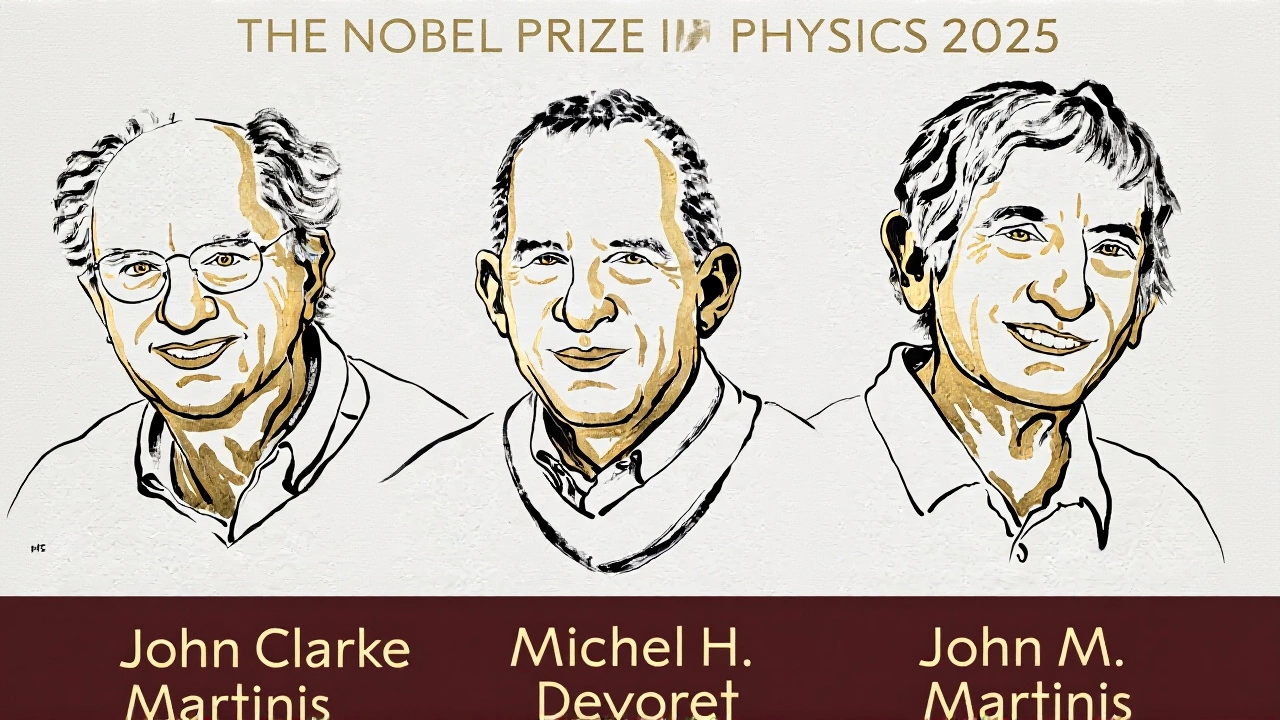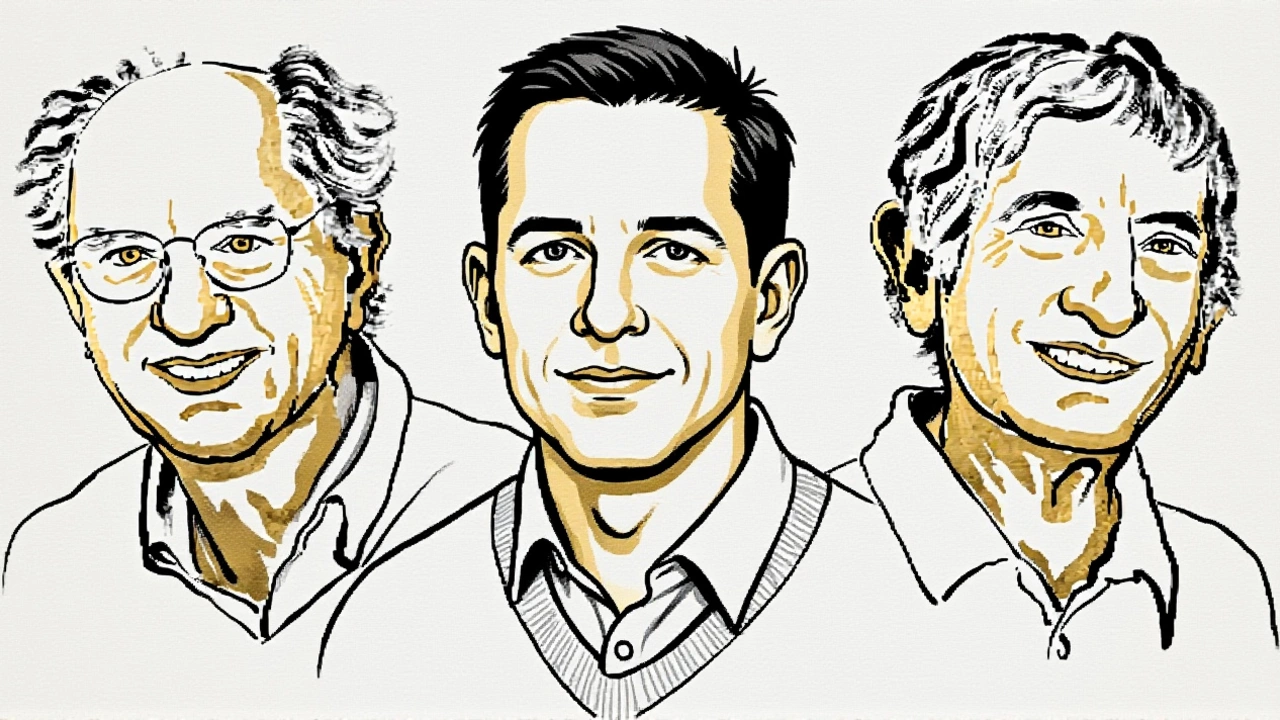When John Clarke, professor of applied physics at University of California, Berkeley, Michel H. Devoret, professor of applied physics at Yale University and University of California, Santa Barbara, and John M. Martinis, professor of applied physics at University of California, Santa Barbara heard the words they’d never expected to hear, the world took notice.
On October 7, 2025, the Royal Swedish Academy of Sciences announced that the trio had been awarded the Nobel Prize in Physics “for the discovery of macroscopic quantum mechanical tunnelling and energy quantisation in an electric circuit.” The prize, worth SEK 11 million (about $1.2 million), will be split three ways and presented in Stockholm on December 10, 2025.
The Nobel Announcement
The announcement came as part of the week‑long Nobel festivities running October 6‑13, streamed live from the Academy’s headquarters. Olle Eriksson, chair of the Nobel Committee for Physics and professor at Uppsala University, summed up the moment: “There is no advanced technology today that does not rely on quantum mechanics.” He listed smartphones, computers, digital cameras and the fiber‑optic cables that stitch the planet together—all built on the very principles the laureates helped to bring from the lab to the chip.
When asked about the broader meaning, Göran Johansson of Chalmers University of Technology added, “They took quantum tunnelling, a microscopic oddity, and scaled it up onto superconducting chips. That change opened the door to quantum computers.”
What the Discovery Means
Back in the 1980s, Clarke, Devoret and Martinis showed that a superconducting circuit—a tiny loop of metal chilled to near absolute zero—could let groups of electrons behave as a single quantum entity. In that state, the electrons “tunnel” through an insulating barrier, producing a measurable voltage even though classical physics says they shouldn’t be able to cross.
Even more striking, the circuit absorbed and emitted discrete packets of energy—quanta—just like atoms do when they jump between energy levels. Their 1988 paper in Science proclaimed they had observed "quantum behaviour in an object big enough to get one’s grubby fingers on." That phrasing captured the imagination of a generation of physicists and engineers.
Reactions from the Scientific Community
Clarke, speaking by telephone from Berkeley, could barely contain himself: “To put it mildly, it was the surprise of my life. I am completely stunned. It never occurred to me that this might be the basis of a Nobel prize.” He went on to credit the groundwork laid by Nobel laureates Anthony Leggett and Brian Josephson, whose theories of superfluidity and tunnelling set the stage for the trio’s experiments.
Tech entrepreneur Ilana Wisby, co‑founder of Oxford Quantum Circuits, told Physics World, “It’s such a brilliant and well‑deserved recognition for the community. We’ve built small quantum processors that trace their lineage directly back to these experiments.”
Meanwhile, graduate students at UC Santa Barbara recalled late‑night lab sessions where the only illumination came from the faint glow of a dilution refrigerator. “We felt like modern alchemists,” said one Ph.D. candidate, “turning the abstract mathematics of quantum theory into something you could literally measure on a chip.”

Implications for Quantum Technology
The practical upshot of macroscopic tunnelling is the ability to create qubits—quantum bits—that are robust enough for real‑world computing. Today’s commercial quantum computers from companies like IBM, Google and Rigetti all rely on superconducting circuits that echo the 1980s experiments.
Because the electrons act collectively, the qubits can maintain coherence longer than isolated atoms, a crucial factor for scaling up to useful processors. The Nobel citation specifically highlighted “energy quantisation,” a reminder that precise control over energy levels is what lets engineers toggle qubits on and off without losing information.
Beyond computing, the same principles underpin ultra‑sensitive magnetic sensors, superconducting microwave resonators used in deep‑space communication, and even emerging standards for quantum‑secure encryption.
Looking Ahead to the Ceremony
As the world watches the December 10 ceremony in Stockholm, the laureates will join a lineage that includes Albert Einstein, Niels Bohr and Richard Feynman. The prize not only crowns a lifetime of curiosity‑driven research but also shines a spotlight on the next wave of quantum breakthroughs.
For now, the three physicists are returning to their labs, notebooks stacked high with data, and a freshly minted Nobel diploma. Their message to the next generation? Keep chasing the oddities that “don’t make sense” at first. Those are the seeds of tomorrow’s tech.

Key Facts
- Date of announcement: October 7, 2025
- Prize amount: SEK 11 million (~$1.2 million) shared equally
- Ceremony location: Stockholm, Sweden on December 10, 2025
- Discovery: Macroscopic quantum tunnelling and energy quantisation in superconducting circuits
- Impact: Foundation for modern superconducting qubits used in quantum computers
Frequently Asked Questions
How does this Nobel win affect the quantum computing industry?
The award validates the core technology—superconducting qubits—that powers the leading commercial quantum computers. Investors see a stronger case for funding hardware startups, and research labs receive renewed attention and funding for scaling up qubit numbers.
What exactly is macroscopic quantum tunnelling?
It’s the phenomenon where a collective group of electrons, acting as a single quantum object, passes through an insulating barrier that classical physics says should be impenetrable. In the laureates’ experiments, this occurred in a superconducting circuit large enough to be fabricated on a silicon chip.
Who were the key figures that paved the way for this discovery?
Foundational work came from Nobel laureates Anthony Leggett, who explored superfluidity, and Brian Josephson, whose Josephson junction theory describes tunnelling in superconductors. Their theories gave Clarke, Devoret and Martinis the roadmap to test macroscopic effects.
When and where will the Nobel ceremony take place?
The formal award ceremony will be held on December 10, 2025, in the Stockholm Concert Hall, Sweden. It will be streamed live on the official Nobel website.
What are the next steps for the laureates after receiving the prize?
All three plan to continue their research into larger‑scale quantum circuits and error‑correction methods. Clarke mentioned a new collaboration with industry partners to accelerate quantum‑ready hardware, while Devoret and Martinis will focus on teaching the next cohort of quantum engineers.
